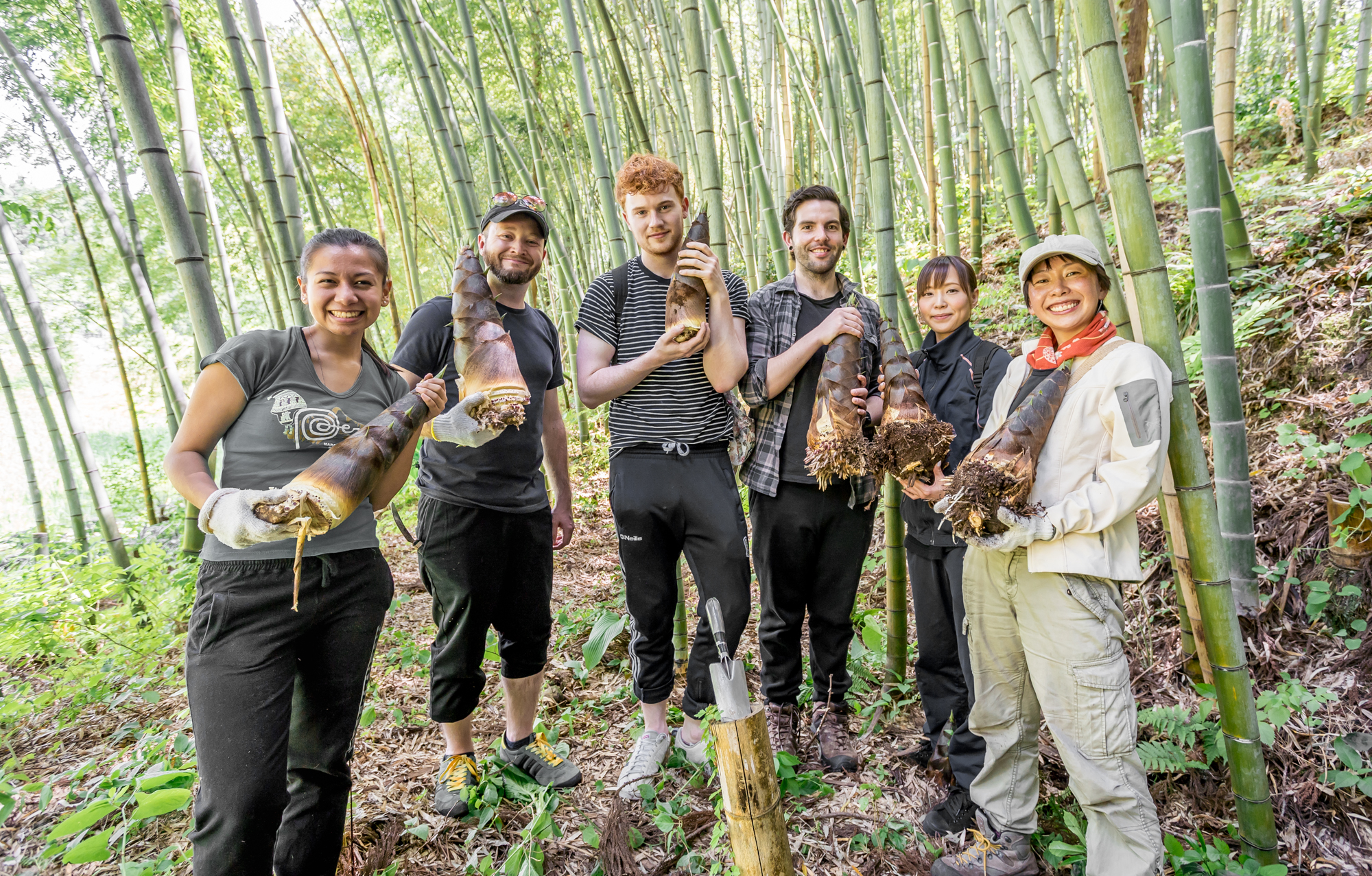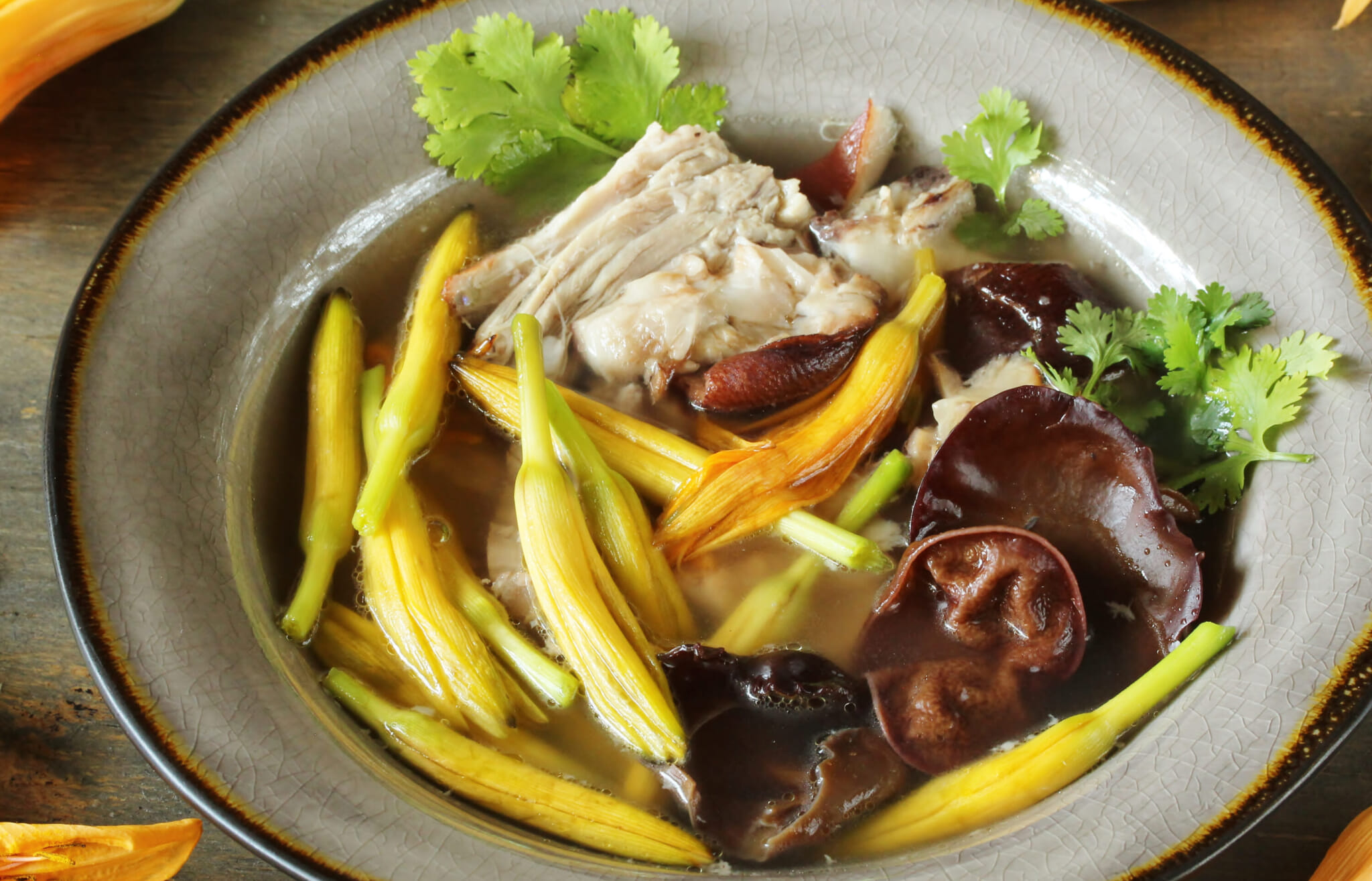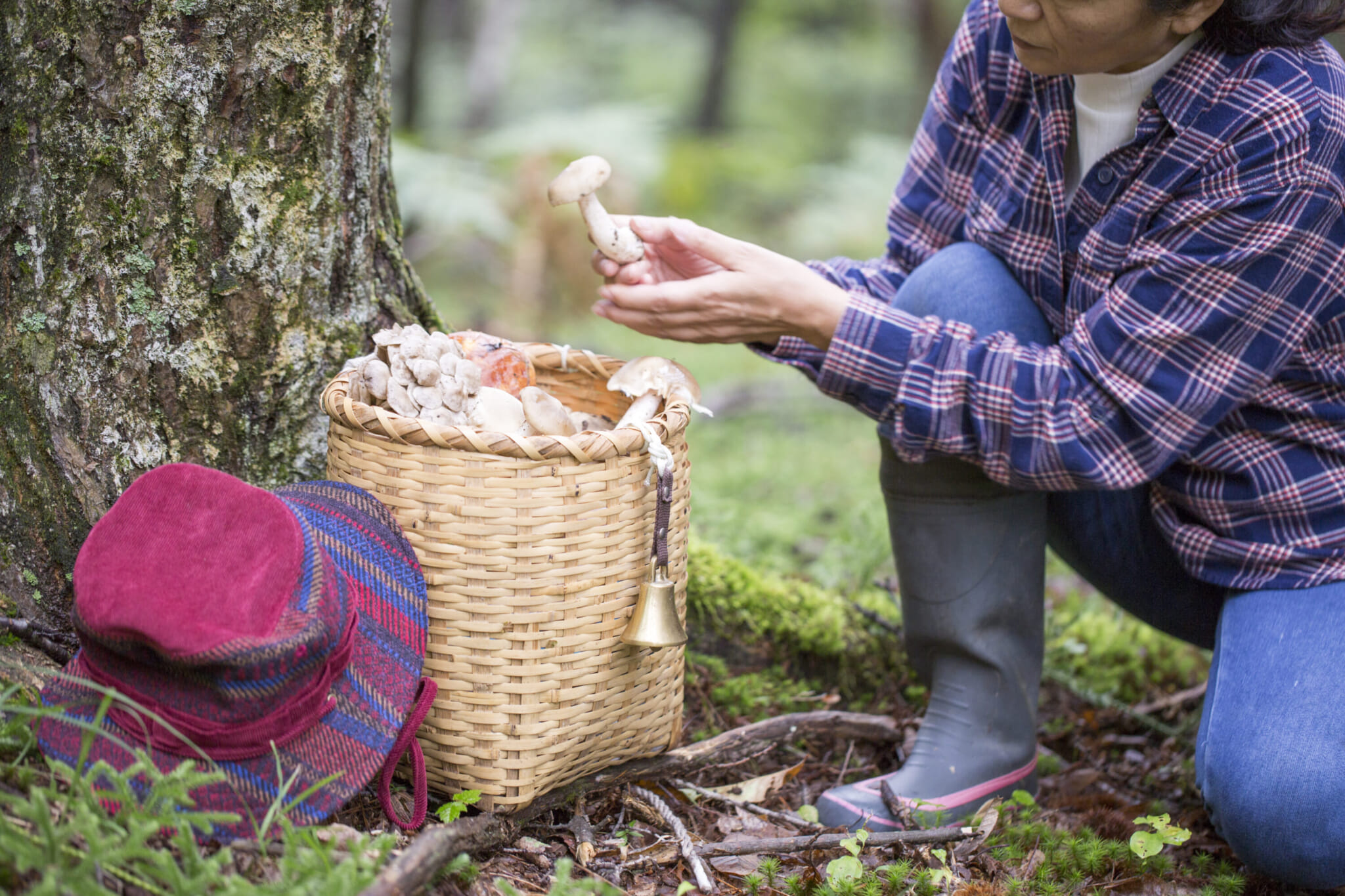Introduction to Foraging in Japan
First things first, it helps to have a little background while hunting.
History of Foraging in Japan
Foraging in Japan has been happening for thousands of years and can be traced back as far as the Jomon era, which ended around 300 BCE. The Jomon people headed out to gather nuts, berries and plants that grew in woodlands and mountains across the country. This culture has lasted up until the present day, with many keen foragers making the most of Japan’s enriching natural landscape.
Key foods that can be foraged in Japan include mountain vegetables, such as mugwort, wild chervil and Japanese wild radish. There are also many kinds of mushrooms, including nameko and oyster.
For those new to foraging, or even foragers new to Japan, it is strongly advised to head out with a local guide. Kuritake and nigakuritake mushrooms, for instance, are very similar in appearance, but nigakuritake mushrooms are poisonous.

Photo by Hidden Japan
Hidden Japan, Yamagata
Head over to Mount Gassan in Yamagata and the surrounding area for some mountain vegetable or mushroom foraging. Operating in May, June and fall, the tours are easily bookable through the Hidden Japan website, offering easy access for English speakers. Each tour lasts around four hours. They are led by local farmers and guides who know the best places and safest vegetables to eat. Once you’ve finished the tour, enjoy a lunch with the ingredients you’ve hand picked.
If you have a car, check out the nearby restaurant, Dewaya, which serves food using ingredients the chefs have foraged that day.
Lamp Guesthouse, Nagano
Known first and foremost for its sauna with a natural river water-bath, Lamp guesthouse provides much more than that. Would-be foragers are encouraged to head out with local guides around Lake Nojiri to sample the delights of the season. Guests can choose a half day or full day of adventures around the local area.
In spring, you’ll find mountain vegetables, while fall comes with mushrooms aplenty: over 6,000 varieties grow in the vicinity. After collecting your own vegetables and wild plants, visitors are invited to use them for cooking. You can also enjoy a delicious meal courtesy of the goodies foraged by the guides.
GoNorth Japan, Iwate
Foragers can join Quinlan Faris, a resident of Japan who has lived here for more than 20 years. He’s passionate about sharing the delights of the Japanese countryside through his company, GoNorth Japan. A fluent Japanese speaker, Faris interprets as he takes tour participants out into the Tohoku wilderness, alongside a local guide. The tour heads around Iwate Prefecture, climbing through rivers and forests to forage the most delicious seasonal goodies. The most popular tour is the spring option, though there is also one in fall if you book far ahead. Participants can join for half a day or a full day. The former includes foraging only, while the latter adds a home-cooked meal using your foraged foods. There is then a delightful hot spring bath to finish.
The YouTube videos made by Faris are a great introduction to foraging in Japan, providing a taste of the experience for anyone who is thinking of giving it a try.

Nozawa Onsen, Nagano
A little-known fact is that the countryside around many onsen towns contains luxurious woodland pickings. Encouraged by the rich mineral water coming from the local area, wild vegetables grow in abundance, and Nozawa Onsen is no different. Known mainly for great snow and relaxing hot spring baths, it also offers a range of foraging tours run by local guides, who know which mushrooms and berries you can or can’t eat. You can, therefore, head off on the course in the knowledge that you’re in safe hands.
Leave with plenty of sansai (mountain vegetables) or mushrooms, depending on the season. After a hard day’s foraging, jump into a hot spring bath for a well-deserved soak.
Otari Nature School, Nagano
Otari Nature School is one of the biggest nature schools in Japan. A nature school is a community center in the countryside that teaches people about the area’s natural surroundings. Run by residents, nature schools, including Otari Nature School, often have stay over options, which could mean camping or sleeping in a tatami room. It has a school building with a classroom in which you can take classes about different aspects of nature. This could be a lesson about something like wood carving or which plants are in season. Once the classes are finished, you can go out and practice what you’ve learned with a guide.
In one class there’s an opportunity to do some mushroom picking. Head out into the local area to gather mushrooms with one of the teachers, then eat lunch with the mushrooms you’ve picked.
Top Minakami, Gunma
The rafting company, Top Minakami, is located on the picturesque banks of the Tone River. In addition to rafting, the company also offers nature experiences, including foraging. Foragers join an experienced guide to hunt for mushrooms and more, deep in the mountains of Gunma. Due to the nature of the tour, mushroom pickers get the added benefit of treading paths rarely used by normal tourists and trekkers. Once you’ve picked your mushrooms, it’s time to head back. At the end of the relatively short, three-and-a-half-hour tour, you’ll end up with around a kilogram of mushrooms to take home.
Participants can take advantage of the campsite stays on offer, while also enjoying mushroom ramen and rice balls made by locals.









